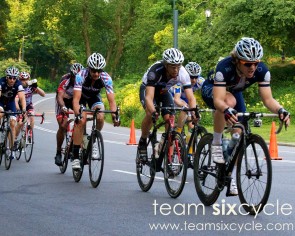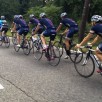Matthew Vandivort started Team Sixcycle-RK&O in the 2012 season, forming it primarily out of racers who had ridden at some time for the NYVelocity Development team. We asked him for some tips for others thinking of starting a new sub-team.
*******
Tips on Starting a CRCA-Subteam
- CRCA provides a terrific platform to form a team within as a CRCA sub-teams benefit from the CRCA community and don’t have the same obligations that come with founding a stand alone USAC club (not to mention the benefit of being able to participate in all of the CRCA club races)
- Depending on your goals – particularly team size and sponsorship – founding a team can either be relatively simple or a major undertaking. Understanding your goals going into the process – and the amount of work required to achieve those goals – is very important.
- From my experience the most important task is finding riders you enjoy training and racing with – whether the roster is five riders or twenty riders – as the roster is core to everything the team does. Ultimately the experience of riding with your team is what justifies all of the work required to start a team.
- Once you have a roster things like custom kit tend to fall in place. We’ve had a terrific relationship with LG via Kim Choquette (kchoquette[at]louisgarneau.us) with both kit and LG’s new line of nutritional products, but there are a number of other companies that provide custom kit to CRCA sub-teams. Don’t hesitate to ask other sub-teams about their experience with different kit providers.
- In the end starting a team was more work than I expected going into the process, but with the first season of racing under our belts there is no doubt that it was worth the effort.
[Thanks to Matthew Vandivort for this content.]
******
Links for following up:
Fall is a good time to start getting your members and sponsors/sub-sponsors together. Personal contacts of team members with potential sponsors/sub-sponsors are often the best place to start. You want to have these lined up in the Fall, if you can, to be able to design a CRCA-subteam kit and order in time for the coming season (see below on delays in clothing orders that often come during crunch time just before season start).
You don’t have to have enough sponsors to pay for all your kit. Some teams do just fine with a sponsor or two (ideally including a bike shop sponsorship that provides a discount!) and having team members pay for the kit they wish to use.
The CRCA Sub-team application can be found here. To complete it, you need, at a minimum, to have a team manager with contact info (both phone and email), any info about sponsor and sub-sponsors that you have gathered, and a list of team members. This application is usually due in mid-February at the latest to the Director of Teams (teams[at]crca.net). Team duty must be agreed upon by the beginning of April.
See the application for details about team composition and responsibilities. All team members must be members of CRCA, with at least half of the team being racing members (less than half can be associate, non-racing members of CRCA). Moreover, each member must list CRCA on their license. There are additional requirements in the application about such things as the CRCA logo on the jersey, team responsibility to make sure each member marshals, etc.
Andrew Shapiro, who started the Bicycle Planet CRCA Subteam in 2012, adds that it is important to fully educate members/potential members of the sub-team on the importance of fulfilling marshaling and team duty responsibilities, especially if they have not been prior members of CRCA. As he puts it, “It’s not an enjoyable task to have to monitor teammates for their marshalling duties and to handle suspended riders.”
One other important requirement is that all sub-team members must wear the same sub-team jersey in races (with the CRCA logo at the proper place). Several companies provide different options for developing team kits. A few prominent options include Champion Systems, Louis Garneau, Verge (or V-Gear), Capo Custom, Zoca and JLVelo. These and other companies usually are hit with a large bulk of orders just before the racing season. This produces delays in providing clothing so that your team might not have kit to race in in March, April or even May. Work ahead, if you can, in designing and ordering so that you can have at least some kits to race in at the outset of the season. There often can be a good bit of back and forth with company designers in finalizing the design, so factor that delay into your timeline for ordering!


